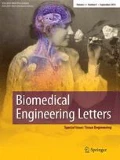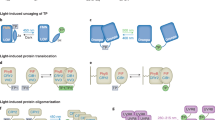Abstract
Optogenetic technology has shown great promise as a tool to selectively control the electrical activity of neural circuits via optical stimulation. This control is enabled by genetic delivery and expression of light-sensitive proteins to specific cells. Optogenetics research in neuroscience has rapidly expanded and the technology shows the potential for clinical translation in treating neurological disorders including Parkinson’s disease and stroke. However, challenges still remain with respect to the clinical application of optogenetic technology. These challenges include developing appropriate gene delivery methods, creating more efficient light-sensitive proteins, and enhancing the specificity of targeting tools. This review will focus on the naturally occurring, light-sensitive opsin proteins and their potential for clinical use. Specifically, various methods for the safe and effective delivery of opsin genes to target cells are examined. By testing the delivery, expression, and stimulation of opsin in different organisms, selective delivery, robust expression, and effective activation of opsin can be optimized. Such testing will naturally focus on primates due to physiological similarities with humans. With further progress, the prospect of clinical translation of optogenetic tools — even beyond neuromodulation with devices such as an optogenetic cardiac pacemaker — may be just around the corner.
Similar content being viewed by others
References
Crick FH. Thinking about the brain. Sci Am. 1979.
Deisseroth K: Optogenetics. Nat Method. 2011; 8(1):26–29.
Guo ZV, Hart AC, Ramanathan S. Optical interrogation of neural circuits in Caenorhabditis elegans. Nat Method. 2009; 6(12):891–896.
Gradinaru V, Mogri M, Thompson KR, Henderson JM, Deisseroth K. Optical deconstruction of parkinsonian neural circuitry. Science. 2009; 324(5925):354.
Kravitz AV, Freeze BS, Parker PRL, Kay K, Thwin MT, Deisseroth K, Kreitzer AC. Regulation of parkinsonian motor behaviours by optogenetic control of basal ganglia circuitry. Nature. 2010; 466(7306):622–626.
Tønnesen J, Sørensen AT, Deisseroth K, Lundberg C, Kokaia M. Optogenetic control of epileptiform activity. Proc Natl Acad Sci. 2009; 106(29):12162–12167.
Murphy TH, Corbett D. Plasticity during stroke recovery: from synapse to behaviour. Nat R Neurosci. 2009; 10(12):861–872.
Airan RD, Meltzer LA, Roy M, Gong Y, Chen H, Deisseroth K. High-speed imaging reveals neurophysiological links to behavior in an animal model of depression. Science. 2007; 317(5839):819–823.
Monahan PE, Samulski RJ. Adeno-associated virus vectors for gene therapy: more pros than cons? Mol Med Today. 2000; 6(11):433–440.
Diester I, Kaufman MT, Mogri M, Pashaie R, Goo W, Yizhar O, Ramakrishnan C, Deisseroth K, Shenoy KV. An optogenetic toolbox designed for primates. Nat Neurosci. 2011; 14(3):387–397.
Almedom RB, Liewald JF, Hernando G, Schultheis C, Rayes D, Pan J, Schedletzky T, Hutter H, Bouzat C, Gottschalk A. An ER-resident membrane protein complex regulates nicotinic acetylcholine receptor subunit composition at the synapse. EMBO J. 2009; 28(17):2636–2649.
Liewald JF, Brauner M, Stephens GJ, Bouhours M, Schultheis C, Zhen M, Gottschalk A. Optogenetic analysis of synaptic function. Nat Method. 2008; 5(10):895–902.
Zhang F, Wang LP, Brauner M, Liewald JF, Kay K, Watzke N, Wood PG, Bamberg E, Nagel G, Gottschalk A. Multimodal fast optical interrogation of neural circuitry. Nature. 2007; 446(7136):633–639.
Xiang Y, Yuan Q, Vogt N, Looger LL, Jan LY, Jan YN. Light-avoidance-mediating photoreceptors tile the Drosophila larval body wall. Nature. 2010; 468(7326):921–926.
Arrenberg AB, Del Bene F, Baier H. Optical control of zebrafish behavior with halorhodopsin. Proc Natl Acad Sci. 2009; 106(42):17968–17973.
Zhu P, Narita Y, Bundschuh ST, Fajardo O, Scharer YPZ, Chattopadhyaya B, Bouldoires EA, Stepien AE, Deisseroth K, Arber S. Optogenetic dissection of neuronal circuits in zebrafish using viral gene transfer and the Tet system. Front Neural Circuit. 2009; 3(21):1–12.
Douglass AD, Kraves S, Deisseroth K, Schier AF, Engert F. Escape behavior elicited by single, channelrhodopsin-2-evoked spikes in zebrafish somatosensory neurons. Curr Biol. 2008; 18(15):1133–1137.
Stroh A, Tsai HC, Wang LP, Zhang F, Kressel J, Aravanis A, Santhanam N, Deisseroth K, Konnerth A, Schneider MB. Tracking stem cell differentiation in the setting of automated optogenetic stimulation. Stem Cells. 2011; 29(1):78–88.
Tsai HC, Zhang F, Adamantidis A, Stuber GD, Bonci A, de Lecea L, Deisseroth K. Phasic firing in dopaminergic neurons is sufficient for behavioral conditioning. Science. 2009; 324(5930):1080.
Covington HE, Lobo MK, Maze I, Vialou V, Hyman JM, Zaman S, LaPlant Q, Mouzon E, Ghose S, Tamminga CA. Antidepressant effect of optogenetic stimulation of the medial prefrontal cortex. J Neurosci. 2010; 30(48):16082.
Bruegmann T, Malan D, Hesse M, Beiert T, Fuegemann CJ, Fleischmann BK, Sasse P. Optogenetic control of heart muscle in vitro and in vivo. Nat Method. 2010; 7(11):897–900.
Abbott SBG, Stornetta RL, Socolovsky CS, West GH, Guyenet PG. Photostimulation of channelrhodopsin-2 expressing ventrolateral medullary neurons increases sympathetic nerve activity and blood pressure in rats. J Physiol. 2009; 587(23):5613–5631.
Lee JH, Durand R, Gradinaru V, Zhang F, Goshen I, Kim DS, Fenno LE, Ramakrishnan C, Deisseroth K. Global and local fMRI signals driven by neurons defined optogenetically by type and wiring. Nature. 2010; 465(7299):788–792.
Diester I, Kaufman MT, Mogri M, Pashaie R, Goo W, Yizhar O, Ramakrishnan C, Deisseroth K, Shenoy KV. An optogenetic toolbox designed for primates. Nat Neurosci. 2011; 14(3):387–397.
Carter M, Shieh JC. Guide to research techniques in neuroscience: Acad Pr; 2009.
Zhang F, Gradinaru V, Adamantidis AR, Durand R, Airan RD, de Lecea L, Deisseroth K. Optogenetic interrogation of neural circuits: technology for probing mammalian brain structures. Nat Protoc. 2010; 5(3):439–456.
Gradinaru V, Thompson KR, Deisseroth K. eNpHR: a Natronomonas halorhodopsin enhanced for optogenetic applications. Brain Cell Biology. 2008; 36(1):129–139.
Zhao S, Cunha C, Zhang F, Liu Q, Gloss B, Deisseroth K, Augustine GJ, Feng G. Improved expression of halorhodopsin for light-induced silencing of neuronal activity. Brain Cell Biol. 2008; 36(1):141–154.
Nagel G, Ollig D, Fuhrmann M, Kateriya S, Musti AM, Bamberg E, Hegemann P. Channelrhodopsin-1: a light-gated proton channel in green algae. Science. 2002; 296(5577):2395.
Nagel G, Szellas T, Huhn W, Kateriya S, Adeishvili N, Berthold P, Ollig D, Hegemann P, Bamberg E. Channelrhodopsin-2, a directly light-gated cation-selective membrane channel. P Natl Acad Sci. 2003; 100(24):13940.
Lin JY, Lin MZ, Steinbach P, Tsien RY. Characterization of engineered channelrhodopsin variants with improved properties and kinetics. Biophys J. 2009; 96(5):1803–1814.
Wang H, Sugiyama Y, Hikima T, Sugano E, Tomita H, Takahashi T, Ishizuka T, Yawo H. Molecular determinants differentiating photocurrent properties of two channelrhodopsins from Chlamydomonas. J Biol Chem. 2009; 284(9):5685.
Arenkiel BR, Peca J, Davison IG, Feliciano C, Deisseroth K, Augustine GJ, Ehlers MD, Feng G. In vivo light-induced activation of neural circuitry in transgenic mice expressing channelrhodopsin-2. Neuron. 2007; 54(2):205–218.
Aravanis AM, Wang LP, Zhang F, Meltzer LA, Mogri MZ, Schneider MB, Deisseroth K. An optical neural interface: in vivo control of rodent motor cortex with integrated fiberoptic and optogenetic technology. J Neural Eng. 2007; 4:S143.
Berndt A, Yizhar O, Gunaydin LA, Hegemann P, Deisseroth K. Bi-stable neural state switches. Nat Neurosci. 2008; 12(2):229–234.
Tsai HC, Zhang F, Adamantidis A, Stuber GD, Bonci A, de Lecea L, Deisseroth K. Phasic firing in dopaminergic neurons is sufficient for behavioral conditioning. Science. 2009; 324(5930):1080–1084.
Atasoy D, Aponte Y, Su HH, Sternson SM. A FLEX switch targets channelrhodopsin-2 to multiple cell types for imaging and long-range circuit mapping. J Neurosci. 2008; 28(28):7025.
Marshall E. Gene therapy death prompts review of adenovirus vector. Science. 1999; 286(5448):2244–2245.
Flotte TR, Trapnell BC, Humphries M, Carey B, Calcedo R, Rouhani F, Campbell-Thompson M, Yachnis AT, Sandhaus RA, McElvaney NG. Phase 2 clinical trial of a recombinant adenoassociated virus vector expressing alpha 1 antitrypsin: interim results. Hum Gene Ther. 2011; 22(10):1239–1247.
Author information
Authors and Affiliations
Corresponding author
Rights and permissions
About this article
Cite this article
Kim, G.U., Kim, HI. & Chung, E. Towards human clinical application of emerging optogenetics technology. Biomed. Eng. Lett. 1, 207–212 (2011). https://doi.org/10.1007/s13534-011-0039-2
Received:
Accepted:
Published:
Issue Date:
DOI: https://doi.org/10.1007/s13534-011-0039-2




